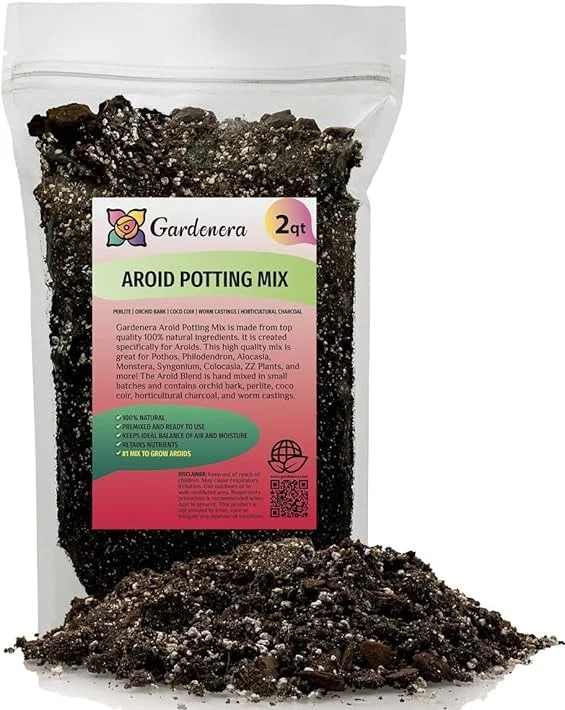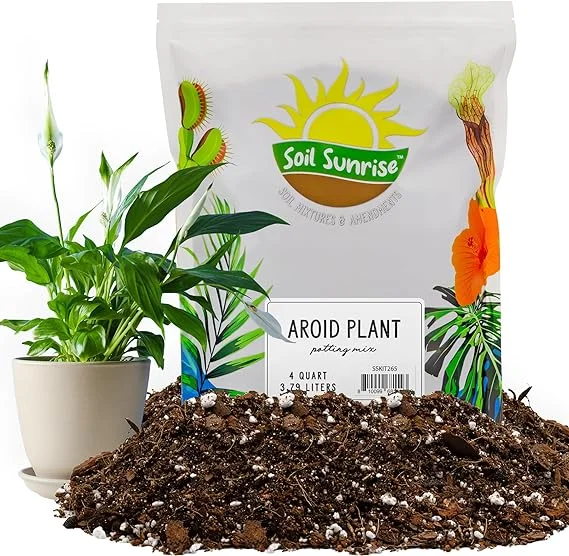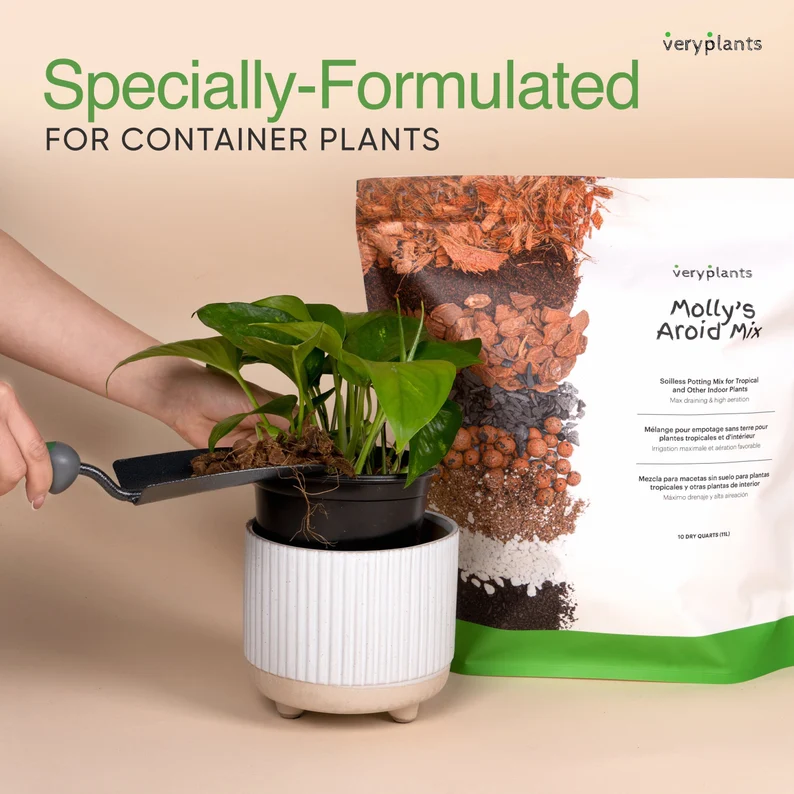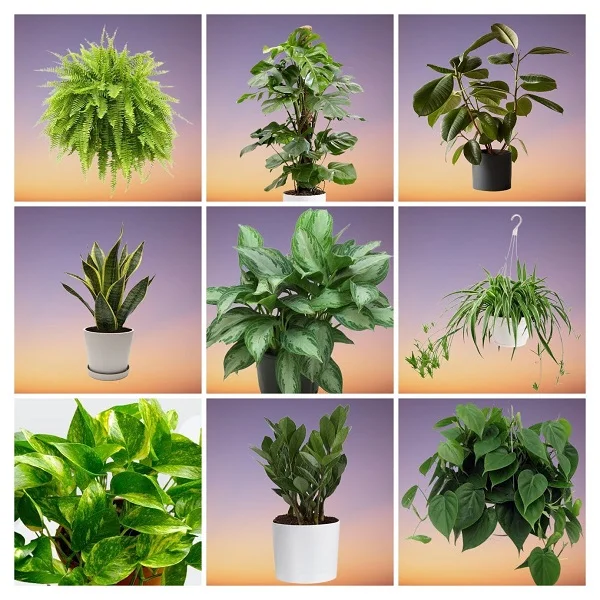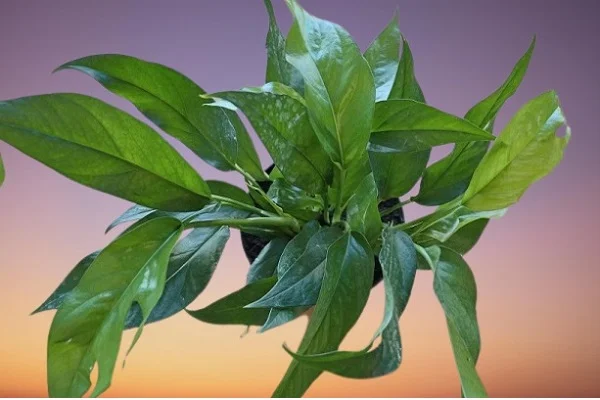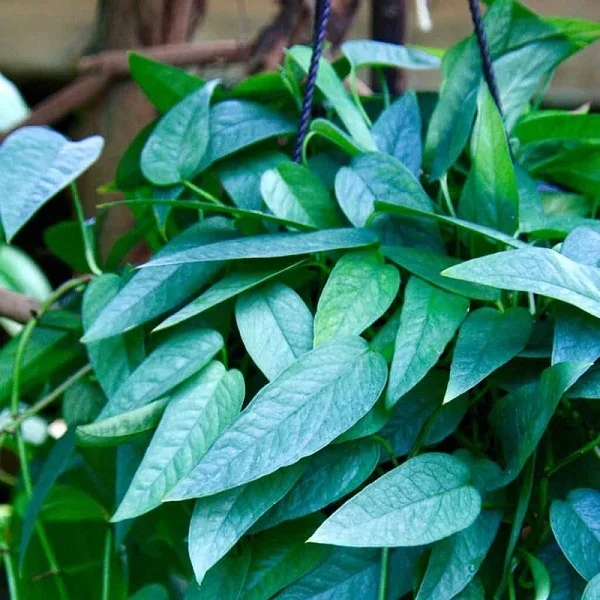Rhaphidophora tetrasperma Indoor Care, Propagation, Growing Problems and Solutions
Some links in this post may be affiliate links
Rhaphidophora tetrasperma flourishes in bright indirect light, warm and humid conditions and moderately moist, rich, well drained, aroids soil coupled with monthly feeding in the growing season.
Rhaphidophora tetrasperma, often incorrectly labelled as Mini Monstera, is one of the popular tropical foliage plants on account of it heart-shaped leaves with split lobes and trailing stems and is spectacular on a trellis or a moss pole.
Rhaphidophora tetrasperma often incorrectly referred to as a Monstera or a Philodendron where it goes by such names as 'Mini Monstera', Philodendron 'Ginny', Empipremnum pinnatum and Philodendron 'Piccolo' is one of the best large low-light plants for the living room.
You may find it mislabelled as a Monstera deliciosa or an Epipremnum pinnatum. Rhaphidophora tetrasperma belongs to the genus Rhaphidophora which comprises of about 100 species.
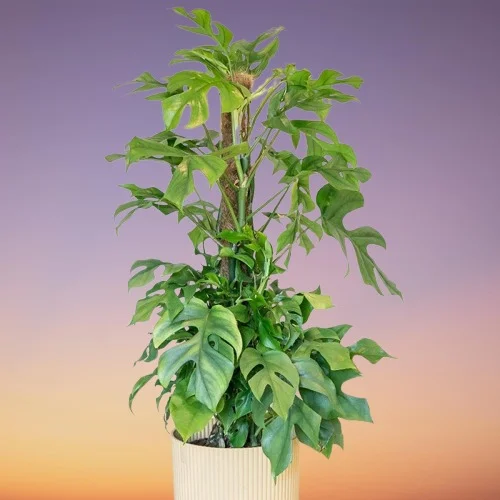
Botanical name: Rhaphidophora tetrasperma
Family: Araceae
Origin
Rhaphidophora tetrasperma is native to Southern Thailand and Malaysia where it grows as an hemiepiphyte and climbs by means of aerial roots to the top of trees in its natural habitat.
Size
Rhaphidophora tetrasperma is a climbing plant which can grow to a height of 12 feet when provided with a sturdy support like a moss pole or a trellis. Regular pruning is necessary to maintain it at a manageable size.
Toxicity
Rhaphidophora tetrasperma is toxic to humans and pets as indicated on Leaf and Paw website. If ingested it can cause pain and swelling in the mouth, tongue and lips, vomiting, excessive drooling and difficulty in swallowing.
Where to Buy
If you are looking to add Rhaphidophora tetrasperma to your collection, they are available online on Etsy (Link to Etsy) and on Amazon (Link to Amazon).
Rhaphidophora tetrasperma Care Indoors
Rhaphidophora tetrasperma prospers in bright indirect light, average warmth of 16-270C, humidity of 50-60% and moderately moist, fertile, well drained, aroids soil coupled with monthly feeding during the growing season.
Rhaphidophora tetrasperma requires regular pruning to keep it neat, encourage a compact growth and to control growth. Repotting is only needed when it outgrows its current pot. Keep on reading for more on these growing conditions and how to achieve them.
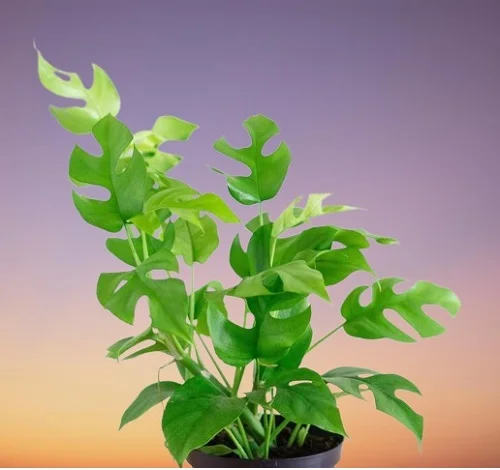
Light requirements
Rhaphidophora tetrasperma grows best in bright indirect light (filtered light). Keep it away from direct sunlight as it can cause sunscorch on the leaves.
Position the plant next to a sunless window or near a bright window. Inadequate light will result in small leaves and leggy growth.
You may also grow the plant under grow lights where natural light is not sufficient. Check out these full spectrum grow lights available on Amazon.
Regularly rotate the pot to ensure that the plant receives light on all sides for uniform growth and also avoid leggy growth.
Watering
Water Rhaphidophora tetrasperma liberally during the growing season and allow the top 2 inches of soil to dry out between waterings.
Reduce watering during the cold season to keep the soil slightly moist as growth is minimal at this time.
Ensure that the pot has a drainage hole to prevent the soil from getting soggy as it can lead to root-rot and death of the plant.
Temperature and Humidity
The best temperature for growing Rhaphidophora tetrasperma is an average warmth of 16-270C. Keep it from cold drafts like breezy windows and doors to prevent sudden drop in temperature as it can lead to leaf drop.
Average room humidity of 50-60% is ideal for Rhaphidophora tetrasperma. However, prolonged periods of low humidity can cause the plant to develop brown leaf tips and edges.
To increase humidity, especially when the air is too dry, set the pot on a wet pebble tray or use a cool mist humidifier. You may also grow the plant in a well-lit bathroom, kitchen, laundry area and other humid areas in the home.
Regularly clean the leaves by damp-wiping with a soft cloth to get rid of dust and also discourage pest infestation. Ascertain that there is good air circulation to reduce fungal diseases.
Fertilizer
Feed Rhaphidophora tetrasperma with a balanced, water-soluble fertilizer every 4 weeks during the growing period for a lush growth. Withhold feeding in the cold season as growth is minimal and feeding at this time may lead to fertilizer burn.
Potting Mix
The best potting mix for Rhaphidophora tetrasperma should be rich in organic matter and well-drained to prevent it from getting soggy while providing the required nutrients. Potting mixes designed for aroids are ideal for this plant.
Repotting
Repot Rhaphidophora tetrasperma during the growing season when it becomes pot-bound that is when the roots grow through the drainage holes.
Use a pot 1 size larger than the current one and ensure that the pot has a drainage hole to prevent the soil from getting soggy as it can lead to root-rot. Take a look at these ceramic pots on Amazon.
Pruning
Pruning Rhaphidophora tetrasperma involves removal of yellow and dead leaves to maintain the plant neat and also discourage pest and disease infestations. For a more bushy plant and to keep the plant in a manageable size, cutback the vines to the soil level at the beginning of the growing season.
Propagation
Rhaphidophora tetrasperma can be propagated at the beginning of the growing period by use of stem cuttings or by air layering. The stem cuttings can be rooted in soil or in water.
How to propagate Rhaphidophora tetrasperma from stem cuttings in soil
Take a 4-5 inches stem cutting from a healthy Rhaphidophora tetrasperma by cutting at a point just below an aerial root.
Ensure the cutting has at least one leaf node and some aerial roots. Insert the cutting in moist free-draining soil while ensuring that the node and the roots are buried under the soil.
Place the set up in a warm, well-lit spot and maintain the soil moist until new growth emerges.
Allow the new Rhaphidophora tetrasperma to be well established before transplanting after which you can begin routine care.
How to propagate Rhaphidophora tetrasperma from stem cuttings in water
Take a 4-5 inches stem cutting from a healthy Rhaphidophora tetrasperma by cutting at a point just below an aerial root.
Ensure the cutting has at least one leaf node and some aerial roots. Place the cutting in a jar containing plain water.
Place the set up in a well-lit spot and change the water every 5-7 days.
Once adequate roots have developed, plant the cutting in soil.
Place the set in a warm, well-lit place and maintain the soil moist through out until the new Rhaphidophora tetrasperma plant is well established.
How to propagate Rhaphidophora tetrasperma by air layering
There are two methods of air layering Rhaphidophora tetrasperma.
1. One method consists of notching the stem of a healthy Rhaphidophora tetrasperma and coating the notch with a rooting hormone.
Surround the notched area with damp moss and then cover it with a polythene film or clear plastic wrap.
After the roots have formed sever the stem just below the covered part.
Remove the polythene and carefully pot the rooted cutting in moist free-draining soil.
Place the set up in a warm, well-lit spot and maintain the soil moist until the new Rhaphidophora tetrasperma is well established after which you can begin routine care.
2. The second method involves coating the Rhaphidophora tetrasperma stem at a node with a rooting hormone.
Surround the node with damp moss and then cover it with a polythene film or clear plastic wrap.
After the roots have formed sever the stem just below the covered part.
Remove the polythene and carefully pot the rooted cutting in moist free-draining soil.
Place the set up in a warm, well-lit place and maintain the soil moist until the new Rhaphidophora tetrasperma is well established.
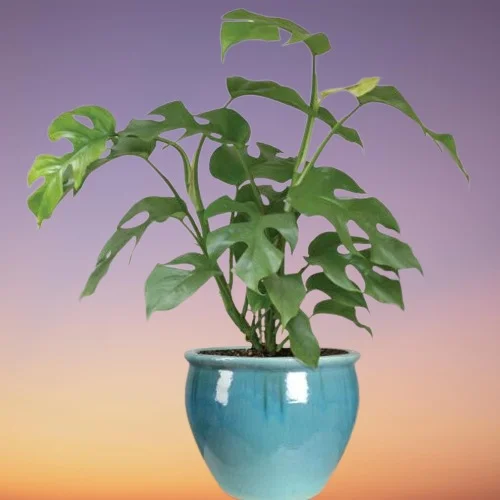
Rhaphidophora tetrasperma Growing Problems
Rhaphidophora tetrasperma problems include yellow leaves, leggy growth, rotting, brown leaf tips, pests and diseases among others. Keep reading for more details on these problems and how to fix them.
Pests
The common pests in Rhaphidophora tetrasperma are mealy bugs, scales and spider mites. Isolate the affected plant to prevent spread to other plants and treat it with neem oil or insecticidal soap as per the manufacturer's instructions.
Diseases
The most common disease in Rhaphidophora tetrasperma is leaf spot. Isolate the affected plant to prevent spread to other plants and treat it appropriately for the disease.
Rotting stems
Rotting stems in Rhaphidophora tetrasperma is an indication of stem-rot disease which is promoted by high moisture and too little warmth. You may save the plant by repotting and keeping the soil dry and warm for a period of time before watering again.
Yellowing leaves
Yellowing leaves in Rhaphidophora tetrasperma are caused by overwatering or soggy soil due to poor soil drainage. Decrease watering and ensure that the pot has a drainage hole to prevent the soil from getting soggy. Read more on how to water houseplants the right way.
If the leaves are pale colored and have straw-colored patches the problem is too much sunlight. Shield the plant from direct sunshine by instaling a light curtain on a sunny window or keep it a few feet away from the window.
Leggy growth and small pale leaves
Leggy growth and small pale leaves in Rhaphidophora tetrasperma are due to too little light. This is an attempt by the plant to reach the light source. The plant will not thrive in deep shade.
Move it to a more brighter spot where it will receive bright indirect light or instal grow lights if the natural lighting is not adequate. Check out this article on understanding light for houseplants.
Brown papery leaf tips and edges
Brown papery leaf tips and edges in Rhaphidophora tetrasperma are due to two possible reasons. One possible reason for brown papery leaf tips and edges is dry air (low humidity). To raise humidity, set the pot on a wet pebble tray or use a cool mist humidifier. Learn more on how to elevate humidity for houseplants.
The second possible reason for brown papery leaf tips and edges in Rhaphidophora tetrasperma is that the plant may be pot-bound. Repot the plant into a pot 1-2 sizes larger than the current one to provide adequate room for growth.
You liked it? Share on social media.
Related Content
Amazon Associates Disclosure
Homeplantsguide.com is a participant in the Amazon Services LLC Associates Program, an affiliate advertising program designed to provide a means for sites to earn advertising fees by advertising and linking to amazon.com.
